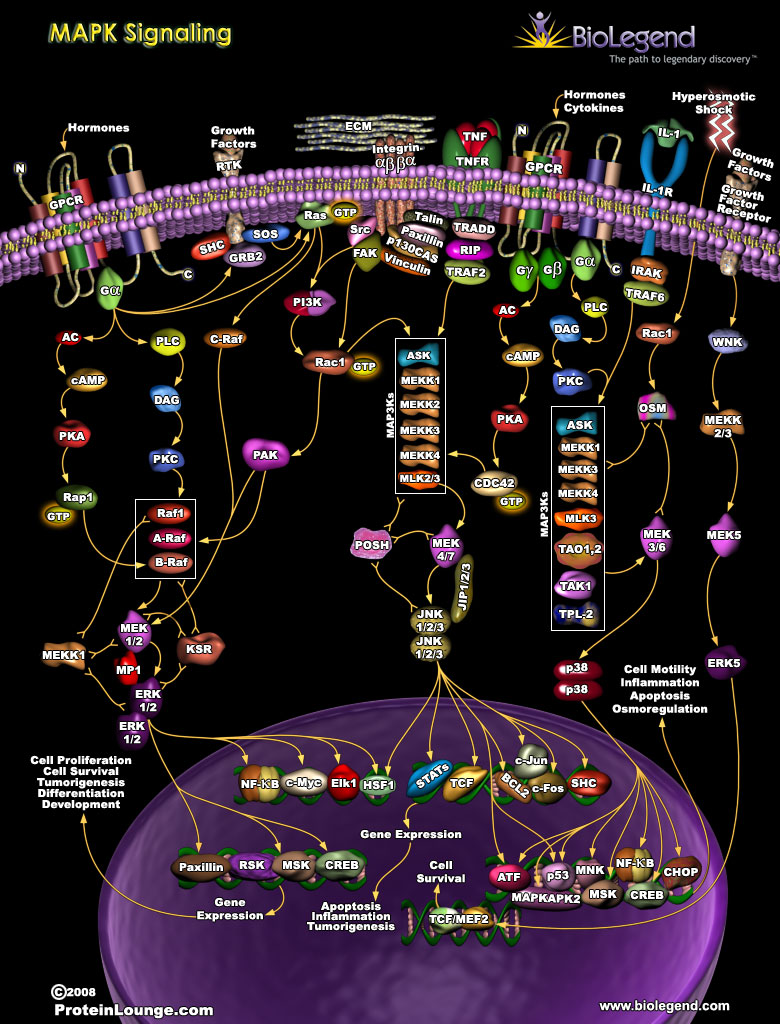MAPK Signaling
Mitogen-activated protein kinases (MAPK) are sequentially activated by phosphorylation, and play critical roles in relaying signals for cell proliferation and cell death. There are three primary groups of MAPKs: extracellular signal-related kinases (ERKs), Jun amino-terminal kinases (JNKs), and stress-activated protein kinases p38/SAPKs. Each of these three signaling pathways follows a general pattern of MAP kinase kinase kinases (MAP3Ks) phosphorylating MAP kinase kinases (MAPKKs), and MAPKKs phosphorylating MAPKs. For the ERK group, signaling begins with activation of cell surface receptors for growth factors and mitogens, which leads to phosphorylation of Ras and Raf proteins (MAP3Ks), subsequent phosphorylation of MEK1/2 (MAPKKs), and finally phosphorylation of ERK1/2. Environmental stresses, inflammatory cytokines, and growth factors can all activate the JNK pathway, which is initiated by MEKK1-4 and MLK2/3 (MAP3Ks) phosphorylation, followed by MEK4/7 (MAPKKs) phosphorylation, and then JNK1-3 phosphorylation. This results in activation of STATs and other transcription factors that can turn on inflammatory gene expression. The p38 pathway is activated by similar signals as the JNK pathway, and begins with phosphorylation of MEKKs, ASK, and TAOs (MAP3Ks), which phosphorylate MEK3/6 (MAPKKs), and ends with p38 activation. Activated p38 can regulate processes like inflammation, cell differentiation, and progression through the cell cycle.
Click on the poster below to view the interactive version.
 Login/Register
Login/Register 








Follow Us